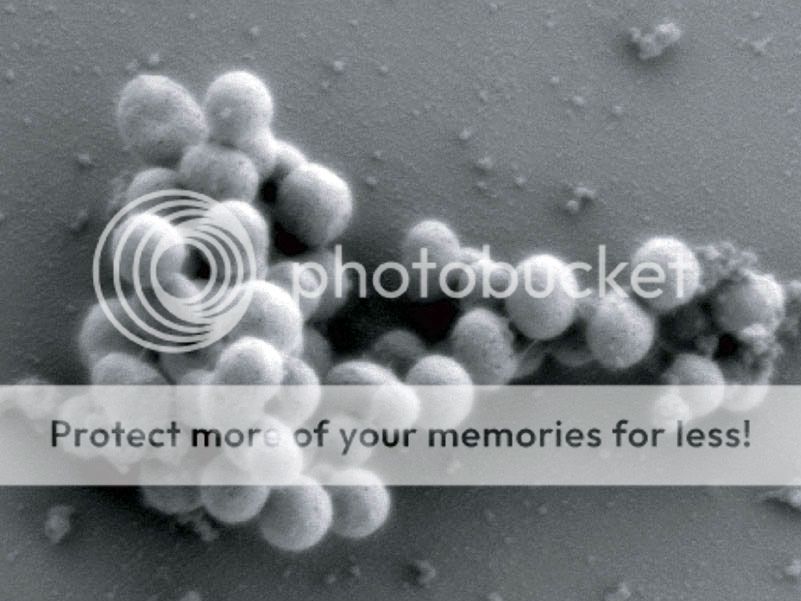REVIEW: “Splice” (includes VIDEO interview with cast + crew)
Jun1

Splice ©2010 Warner Brothers Entertainment, all rights reserved.
About a week and a half ago, scientists achieved a remarkable evolutionary stepping stone in the technological holy grail of eventually engineering synthetic life. Nicknamed ‘Synthia’ by her experimental progenitors, the latest discovery is a viable, self-propagating yeast cell hosting a bacterial Mycoplasma mycoides genome (consisting of non-biological DNA) purely composed in the laboratory. In eerily apt timing, Splice, a new science fiction thriller premiering this week, explores the scientific ramifications and bioethical morass encompassing the creation of a human-animal hybrid by a rogue superstar genetics couple. Under the “continue reading” cut, ScriptPhD.com’s review of Splice, discussion of the expanding frontiers of genetic engineering, and a special video interview with the director/writer, producer and stars of the film.
REVIEW: Splice
ScriptPhD.com Grade: B
Scientists Clive (Adrien Brody) and Elsa (Sarah Polley) are a superstar genetic engineering couple at the peak of their careers. Employed by the shady Newstead Pharmaceutical company, they excel at splicing DNA from various animals to create male-female hybrid breeding pairs, whose blood contains a curative protein to be used for farm animal epidemics. Clive and Elsa’s suggestion of expanding the research to include human-animal hybrids (for the purposes of tackling human disease models) is quickly rejected by the company for moral and ethical reasons. Infuriated by the slight, and buoyed by their burgeoning success, Elsa convinces a skeptical Clive to infuse their hybrids with human DNA (her own) in clandestine experiments. Remarkably, the effort works, and a fetus of unknown composition and sentience begins incubating in their laboratory. Amidst vociferous protests by Clive to “shut down” the experiment, the creature is born and begins aging at a remarkably rapid pace—she will live her whole life in the span of a few months. Nicknamed “Dren” by her creators, the humanoid child quickly forms a parental bond with Clive and Elsa and develops into an intelligent, thinking, feeling woman before their eyes. But even before the duo can formulate a plan for introducing Dren to the world and facing the consequences of their recklessness, an unexpected, awry turn of events with their simpler hybrids (in easily the film’s most noir humor scene) forever changes the course of events for them all.

Scientists Clive and Elsa attempt to bathe their genetically engineered creation Dren, in a scene from Splice.
Shot in gorgeous dark hues and with lenses evincing impossible angles, Splice is very much reminiscent of director Vincenzo Natali’s predecessor psychological thriller Cube. The film is also blessed with believable, emotionally rooted acting performances, not the least of which is newcomer Delphine Chanéac’s wordless portrayal of the chimera Dren. Nevertheless, the ambitious material fails to overcome some noticeable flaws. Multiple storylines are introduced without ever being explored beyond the surface. Dren is clearly an intelligent being frustrated by the confines of her helpless existence, but we never learn much more about her than that. Elsa’s motivations for creating (and keeping) her are weighed by a troubled past that is glossed over superfluously. While we at ScriptPhD.com were impressed with the detailed extravagance of the lab sets, and the actors’ ease around the equipment and dialogue, the idea that they alone would have the means and the ability to successfully carry out experiments of this scope in an underground facility borders on the ludicrous. If anything, moviegoers should be relieved that firm regulatory guidelines, not to mention the necessary time and expensive equipment, would render such a scenario unlikely. And then there are, of course, the scenes involving sex between a human and Dren, and both, while shocking, range from the inappropriately funny to the downright disturbing. The director insists that the content was non-negotiable from the start of the film, and that it represented a staple of ancient mythology—to fall in love—that transcends being human. “The prime directive of any organism is to procreate and the creation of a mythical figure like Dren is not too far away,” he said at a recent roundtable gathering in Los Angeles. We’ll let you make up your own minds.

"Synthia" cells containing an artificial DNA genome. Courtesy of Science/AAAS
Ultimately, Splice‘s weaknesses in script and story development are supplanted by its penetrating psychological impact and willingness to take shocking risks in exploring a popular sci-fi staple in a novel way. Regardless of whether you dislike the movie’s artistic choices, or whether it appeals to you on a purely cinematic level, Splice will leave you talking as you leave the theater, and more importantly, will leave you thinking long after having seen it, critical of good science fiction. Especially in a world where scientific possibilities seemingly verge on the limitless, and the technology to realize them develops at a lightning pace, thought-provoking discussion of the resulting profound moral implications will be an important part of science media and entertainment. So what is the likelihood of a “Dren” in our imminent future? Not high. Since the famous Vacanti mouse-human ear chimera done at MIT in 1995 (which partially inspired Splice), development of animal-human hybrids has been sparse. Nevertheless, pigs possessing vasculature flowing with human blood, mice with human brains, and a cornucopia of farm animals with human stem cells have engendered enormous controversy. In 2005, the National Academy of Sciences released a set of voluntary guidelines for researchers working with stem cells, also encompassing chimeras. The International Society for Science and Religion provides an outstanding commentary rich with scholarly science articles on the subject. Furthermore, while British lawmakers approved animal-human hybrids in 2008, a bill introduced by two U.S. Senators in 2009 attempted to prohibit such research (it died in committee, but is surely not the first). Even lead researcher Craig Venter and has acknowledged the considerable time undertaken to create a lone synthetic cell. “We don’t know enough biology to create or synthesize life,” said Boston University synthetic biologist Jim Collins. “I think we’re far removed from understanding how [you would] build a truly artificial genome from scratch.”
Until that fateful day, our imaginations can explore the topic through the kaleidoscope of movies like Splice.
ScriptPhD.com was exceptionally privileged to sit down recently with Splice producer Joel Silver, writer/director Vincenzo Natali, and stars Adrien Brody (Clive) and Sarah Polley (Elsa). We discussed the scientific themes of the film, the ideas of ethics and possibilities in modern genetics pertaining to the film’s content, and how major studio distribution augurs for sci-fi films like Splice.
Official Splice trailer:
Splice releases nationwide on Friday, June 4.
~*ScriptPhD*~
*****************
ScriptPhD.com covers science and technology in entertainment, media and pop culture. Follow us on Twitter and our Facebook fan page. Subscribe to free email notifications of new posts on our home page.


















8:46 am on June 8th, 2010
I honestly cannot wait to see this! It has JJ Abrahams all over it! Weird tech coupled with sophisticated character development. I’ll definately watch this at the cinema!